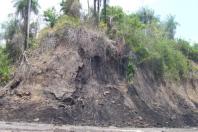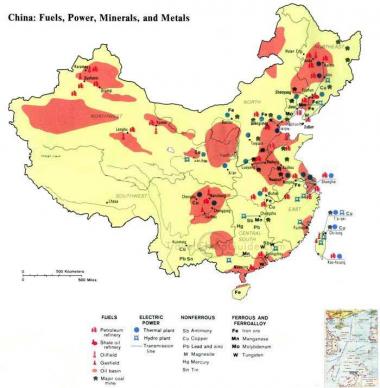China
The plot:
China is one of only three countries in the world to have commercial operations of oil shale mining underway. China also contains some of the largest oil shale deposits on earth. Through both the China National Petroleum Corporation (CNPC) and Sinopec China also has large international holdings in tar sands bitumen and oil shale kerogen deposits outside of China, and seeks to expand oil shale extraction within the borders of the PRC. Technology very similar to bitumen extraction from Canada or kerogen extraction from Estonia or Brazil has been developed domestically within China.
The details:
Many dozen deposits of varying size throughout the PRC, five thought to be commercially viable.
Estimates as to total in place vary wildly, but approximately 30 bn bbl synthetic crude equivalent thought to be recoverable. Electricity and synthetic oil production are undertaken currently.
Mining is the primary focus of development underway. Mining followed by the “Fushun Process” of extraction operate at seven oil from shale plants in China. The Fushun Process has been adapted for experimentation outside of the PRC by Sinopec, however Chinese domestic oil from shale production is carried out by the Fushun Mining Group.
Sinopec formerly developed oil shale domestically. They already retain the technology for extraction.
Daily production numbers are scarce, but China is thought to produce a rough average of 10 000 bpd.
If production numbers are accurate, China is currently the largest producer of kerogen based synthetic oil from shale in the world.
Estimates are that this could increase many fold over in the coming years.
Water, deforestation, smog and air pollution plague the PRC. The largest economy in the world continues to expand carbon emissions, at a time when the opposite is needed globally. The impacts on the climate and directly on air quality, water and diminishing land mass are already dire, oil shale stands to be among the worst.
Having established a major industry for extraction with seven plants and the largest oil shale facility on the earth, the already hungry Chinese energy demand can absorb oil shale as a raw resource for extraction and refining. Coupled with the size of their existing oil shale reserves at home and their investments in them abroad (such as the Athabasca tar sands deposits in Canada or the Orinoco Basin in Venezuela) and the contribution of China to the hard wiring of the global energy grid to extreme, dirty energy is hard to over state.



